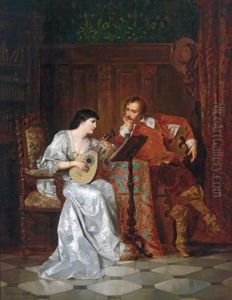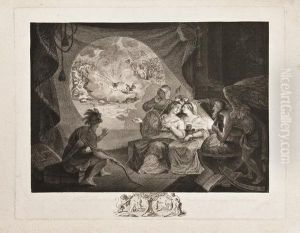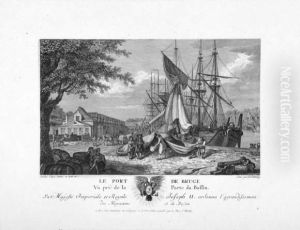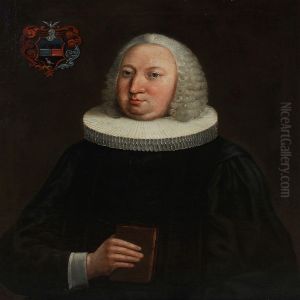Carl Gottlieb Guttenberg Paintings
Carl Gottlieb Guttenberg was a distinguished German engraver, born in 1743, in the principality of Ansbach, which is now part of modern-day Bavaria, Germany. He showed an early aptitude for art and trained under several notable figures of his time. Though initially focusing on painting, Guttenberg's interest shifted towards engraving, a field in which he would excel and become renowned throughout Europe.
Guttenberg's work is characterized by its meticulous detail, precision, and the ability to capture the essence of his subjects with remarkable clarity. He was particularly known for his landscape engravings and portraits, as well as for his skill in reproducing works of famous painters. His engravings served not only as works of art but also as means of disseminating the works of other artists to a broader audience, thus playing a crucial role in the art world of his time.
Throughout his career, Guttenberg worked in various European cities, including Paris, where he was influenced by the French engraving school, which was then at its zenith. This period was crucial in developing his style, which combined the German meticulousness with French elegance and grace. Despite facing competition from other engravers and the challenges posed by the political turmoil of late 18th-century Europe, Guttenberg's work remained highly sought after by collectors and connoisseurs.
Unfortunately, Carl Gottlieb Guttenberg's life was cut short, and he died in 1790 at the age of 47. His legacy, however, lives on through his engravings, which continue to be studied and admired for their beauty and technical proficiency. Guttenberg's contributions to the art of engraving have secured his place in the history of European art as one of the leading figures of the 18th century.



